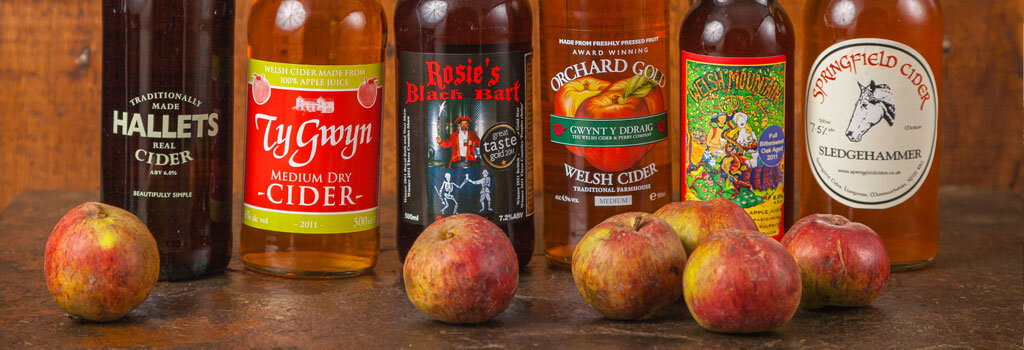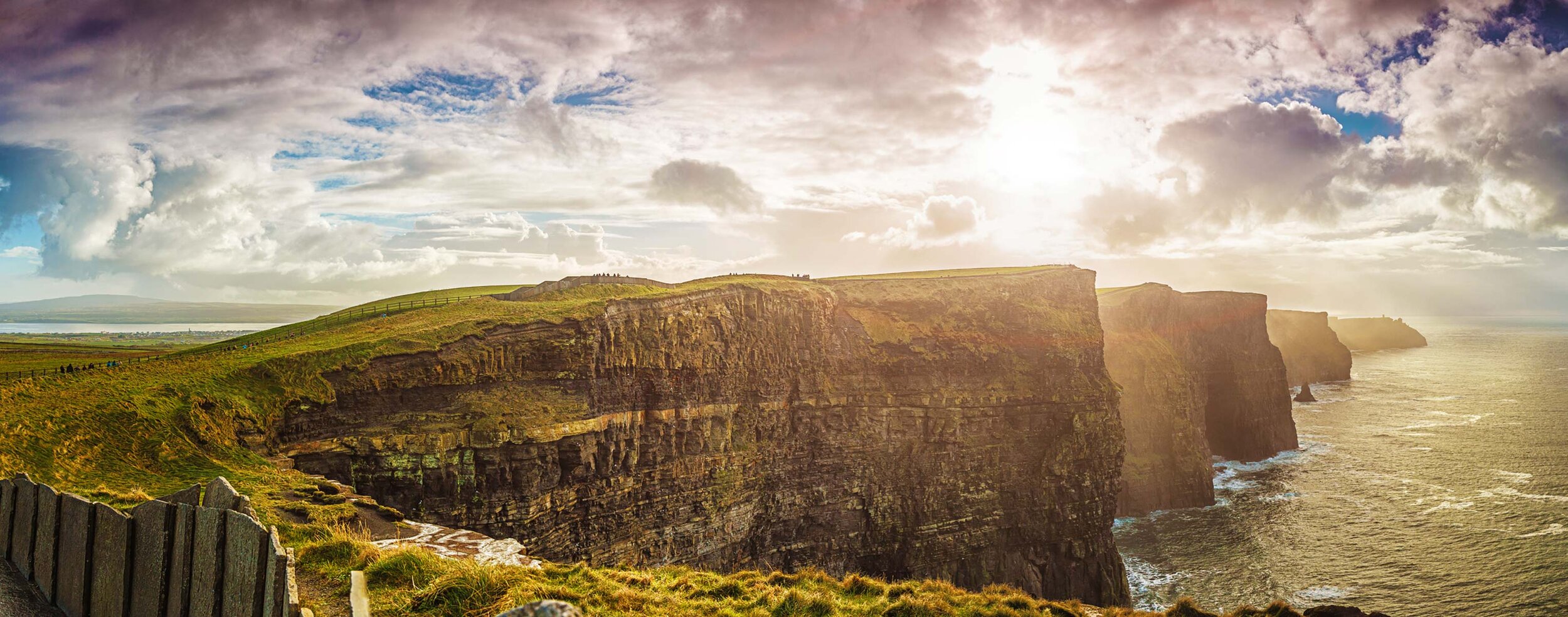
Celtic Food and Drink…
Explore Food and Drink in the Celtic Nations…
Introduction
Here at Celtic Link we’re all about feeding the soul. But we’re equally keen on feeding the body as well, so it’s fortunate that the Celtic nations have a rich and distinctive food and drink heritage.
From Scotland’s distinctive haggis, down through Manx kippers, Irish stew, Welsh cakes, Cornish pasties and on to the Breton galette crêpe, you’ll find food here unlike any other in Western Europe.
And the same goes for drinks. The most iconic is probably Scotch whisky (whiskey with an ‘e’ if you’re in Ireland). But the Celtic nations also boast world-class gins and wine from Cornwall, beer from breweries small and large in Scotland, Wales, Cornwall and Ireland (including a small brand called Guinness that you might have heard of) and cider (Brittany and Cornwall).
One thing’s for sure. You won’t go hungry or thirsty on your travels through the Celtic nations!
Brittany
When it comes to food, the region is probably best known for its crêpes, particularly the savoury version of the pancakes known as galettes. The buckwheat flower used in their making gives them a distinctive crunchy texture and they are served with everything from bacon and sausages to cheese and mushrooms.
Given its long Atlantic coastline, it’s not surprising that seafood features prominently on Breton menus. Mussels, oysters, shellfish and other crustaceans feature prominently in a typical seafood platter, served on a bed of seaweed. For desert, a pastry of butter, flower and sugar known as kouign ammon is a popular choice.
Turning to drinks, apple cider traditional accompaniment to galettes. Cider mixed with crème de cassis makes an aperitif called Kir Breton. And you wouldn’t be in France if you couldn’t get excellent wine – the best-known in Brittany being the Muscadet that makes a perfect accompaniment to local seafood.
Cornwall
When talking about food in Cornwall, you simply have to start with the pasty. What started as a humble miner’s lunch staple is now a globally recognised gastronomic phenomenon. And by the way, only a pasty made within the borders of the Duchy can legally be called a ‘Cornish’ pasty. Perhaps only the Cornish cream tea - clotted cream, jam and scones – challenges the pasty as the region’s culinary icon. Just make sure to put the jam on first if you want to avoid scornful looks from the locals.
Otherwise Cornwall offers seafood (pilchards, Newlyn crabs), saffron buns (a kind of tea cake), hevva cake (yes, it is heavy), Cornish fairings (the local biscuit) and a huge variety of locally produced cheeses.
There’s an equally varied offering when it comes to drinks. Cornwall is one of the few places in the UK to boast vineyards (producing award-winning still and sparking wine) and also has a wide range of craft gin producers. Beer and cider, from large producers like St Austell Breweries and Healey’s to the dozens of microbreweries are very also popular.
Ireland
A handful of ingredients – lamb, potatoes, bread – feature in many traditional Irish dishes. Irish Stew, with lamb, potatoes, onions and often carrots and bacon, is an iconic dish across the island and is particularly popular in the colder winter months. As you might expect, there are many potato-based dishes, including Colcannon (creamy mashed potatoes mixed with cabbage and served with ham) and Boxty (a type of pancake made with finely grated fried potatoes).
Along with potatoes, bread is also something of a national symbol. Irish soda bread takes many forms and traditional recipes are passed down between different generations of the same family. Barmbrack, meanwhile, is a fruitcake filled with raisins, fruit and spices which is then soaked overnight in tea and whiskey.
And of course it would be unforgiveable not to mention two of the other staples of the Irish culinary experience, the Irish Breakfast and the Sunday roast.
While there is plenty of tasty food on offer, Ireland arguably remains better known for its drinks. With 18 distilleries in operation, and more in the pipeline, Irish whiskey is in robust health. Newer producers like Slane and Dead Rabbit are keeping the venerable old Jameson’s and Bushmills brands on their toes.
It’s a similar story in the beer business with the iconic global stout brands like Guinness and other large producers like Murphy’s working alongside the dozens of micro-breweries spread across the island.
Isle of Man
Given its geography, it’s hardly surprising that seafood dominates the traditional food produce of the Isle of Man. The national dish could be said to be herring and boiled potatoes while crab, lobster and scallops are also fished in local waters. Queen Scallops – Queenies – are a particular delicacy. Freshwater trout and salmon come from the island’s lakes and rivers.
Smoking is a traditional form of cooking on the island and the most internationally famous local delicacy – Manx kippers – are, of course, smoked herring. Salmon and bacon are also smoked to give a very distinct taste.
Local livestock, particularly lamb, is another popular delicacy. The lush green meadows of the island are the source of excellent milk and a wide variety of distinctive local cheeses are on offer. Finally, the sweet loaf called bonnag, popular in local tea houses, is a very traditional Manx foodstuff with a long history.
Beer and cider are the main local drinks with a range of long-established and more recent microbreweries across the island. Okell's Brewery is the island’s oldest, established in 1850. Manx Spirit is a clear spirit distilled by Kella Distillers, which also produces a range of blended and pure malt whiskeys.
Scotland
Scotland boasts a large number of distinctive national dishes, but haggis is undoubtedly the most iconic. Essentially an animal stomach’s stuffed with a sheep’s heart, liver and lungs, mixed with oats, suet, spices and onion, it’s a lot more appetising than it sounds. And it’s often served with ‘neeps and tatties’ (turnips and potatoes).
Other highlights include Scottish salmon (the country’s biggest food export), which is farmed off the west coast and is famed for its buttery taste, Aberdeen Angus Beef, grouse and other game. At the more everyday level, porridge remains popular for breakfast while fish suppers (fish and chips) are an evening staple.
A good selection of puddings (or desserts) is also available, including such delicacies as shortbread, Dundee Cake (heavy fruitcake topped with almonds), and Tablet (a very sweet fudge).
If haggis is Scotland’s national dish, whisky is undoubtedly the national drink, with almost 150 distilleries across the country. Whisky production is closely regulated with a minimum three years aging in oak barrels required. Scotland is divided into five whisky producing regions and the wide variety of flavours means that it would be hard to find a brew that you didn’t like.
Beer lovers need not despair either, with more than 100 breweries spread across the country.
Wales
Leeks and lamb are the best-known ingredients in Welsh cuisine. Leeks feature in some of the most important dishes such as cawl (a meat broth with vegetables) and the Glamorgan sausage and the vegetable has become a symbol of the country itself. Lamb is the meat most associated with Wales due to the country’s extensive sheep farming tradition.
Cheese is also a key ingredient of a number of staple dishes, including Glamorgan sausage and the iconic Welsh rarebit (melted cheese on toasted bread). Caerphilly cheese is the most famous ‘brand’.
Other famous products include Welsh cakes and Bara brith. Made with shortbread-style dough, Welsh cakes usually contain raisins and can be eaten hot or cold. Bara brith (speckled bread) is a fruit loaf soaked in tea before cooking – hence it is often known as Welsh tea bread.
One of the more unusual of the Welsh delicacies is Laverbread, made by cooking up a type of seaweed into a puree to be served with bacon or cooked into patties.
Beer is Wales’ national drink with dozens of breweries spread across the country. There are also smaller producers of whisky, gin, cider, rum and sparking wine.

